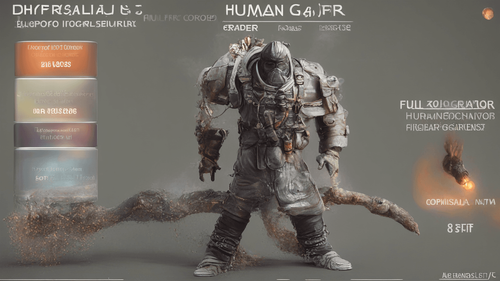
Introduction: Bringing Digital Imagery to Life
In the ever-evolving landscape of technology, one phenomenon that continues to captivate our imagination is the human photo generator. This cutting-edge innovation has redefined the way we create and manipulate images, offering an unprecedented level of realism and creativity. In this article, we will delve into the intricate workings of human photo generators, exploring their applications, impact, and the underlying technology that makes them possible.
Understanding Human Photo Generators
Human photo generators, also known as portrait generators, are sophisticated AI-driven tools that employ advanced machine learning algorithms to generate highly realistic images of human faces. By analyzing vast datasets of human facial features, expressions, and attributes, these generators have the ability to synthesize new images that are virtually indistinguishable from actual photographs of real people.
The Technological Marvel Behind Human Photo Generators
The power of human photo generators lies in their ability to harness the capabilities of Generative Adversarial Networks (GANs). GANs consist of two neural networks - a generator and a discriminator - that work in tandem to create images. The generator fabricates images, while the discriminator evaluates their realism. This iterative process results in the refinement of generated images until they are nearly indistinguishable from authentic photographs.
Key Components of GAN-based Human Photo Generation
- Generator Network: This network learns to create images from random noise, gradually refining its output through multiple training iterations.
- Discriminator Network: The discriminator evaluates the images produced by the generator, providing feedback to improve their authenticity.
- Loss Functions: Adversarial loss and perceptual loss functions guide the training process, ensuring the generated images are both realistic and coherent.
Applications of Human Photo Generators
The applications of human photo generators are as diverse as they are revolutionary. From the world of art and entertainment to industries like e-commerce and digital marketing, these generators have found their way into a myriad of use cases.
Digital Artistry Redefined
Artists and creators are leveraging human photo generators to breathe life into their digital creations. By seamlessly integrating AI-generated portraits into their works, they can explore new dimensions of creativity and storytelling.
E-Commerce and Fashion
In the realm of e-commerce, human photo generators are transforming the way products are presented online. Brands can now showcase their merchandise on virtual models, allowing customers to visualize products in a more relatable and engaging manner.
Entertainment and Gaming
The entertainment industry has embraced human photo generators to enhance character design and world-building in movies and video games. AI-generated characters can exhibit a wide range of emotions and expressions, enriching the immersive experience for audiences.
Identity Protection and Privacy
Human photo generators have also sparked discussions about identity protection and privacy concerns. With the ability to create highly convincing fake images, questions about digital authenticity and the potential for misuse have come to the forefront.
The Human Photo Generator Revolution
The advent of human photo generators has ushered in a new era of visual content creation, offering unprecedented possibilities for artists, businesses, and individuals alike. The convergence of AI and digital imagery has unlocked a realm of creativity and innovation that was once thought to be the stuff of science fiction.
FAQs about Human Photo Generators
How do Human Photo Generators Work?
Human photo generators use GANs, which consist of a generator network that produces images and a discriminator network that evaluates their realism. Through iterative training, the generator refines its output to create lifelike images.
Are the Generated Images Truly Realistic?
Yes, the generated images can be remarkably realistic, thanks to the interplay of advanced machine learning algorithms and vast datasets of human facial features.
What are the Ethical Concerns Surrounding Human Photo Generators?
Ethical concerns include the potential for identity theft, misuse of AI-generated images, and challenges in distinguishing between real and fake content online.
Can Human Photo Generators Replace Human Photographers?
While human photo generators offer incredible convenience and possibilities, they cannot replace the creative intuition and artistry of human photographers.
How Can Businesses Leverage Human Photo Generators?
Businesses can use these generators to create virtual models for showcasing products, enhance branding, and engage customers with relatable visual content.
What Lies Ahead for Human Photo Generation Technology?
As AI continues to advance, we can expect even more realistic and diverse human photo generation capabilities. However, ethical and regulatory considerations will play a significant role in shaping its future.
Conclusion: Unleashing Creative Boundaries with Human Photo Generators
In the ever-evolving realm of technology, human photo generators stand as a testament to the limitless possibilities that AI can unlock. From digital artistry to practical applications in e-commerce and entertainment, these generators have the potential to reshape how we perceive and interact with visual content. As we continue to explore the capabilities of human photo generators, it's essential to tread carefully, considering the ethical implications and leveraging their power responsibly. Embracing this technology with the right balance of creativity and ethics, we can unlock a future where imagination knows no bounds.